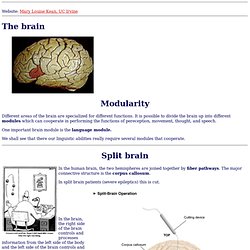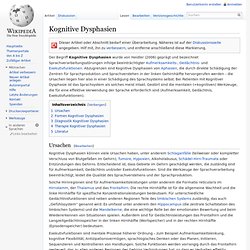

Using technology with young learners. In yesterday’s webinar, I introduced many of the tools I use with my students when teaching Kid’s Box.

If you missed it, you can watch the recording below; I’ve also shared the links for the tools I recommend underneath the recording. Animations Animation can be a child-friendly way of integrating technology in the classroom. Sedef recommends Go Animate for Schools, Puppet Pals, and PowToons. PresentationsBiteslide is a good alternative to PowerPoint for young learners.
Babbling Helps Babies Learn Language Faster. Talking to babies makes them start using language earlier, a new study shows.

The study, published in Child Language Teaching and Therapy, examined data from the Growing Up in Ireland study in which 7,845 babies, around nine months of age, were studied and the factors that could affect child development such as breastfeeding, maternal education, gestational age and interactions with siblings were controlled. It was found that reading to babies improved their problem-solving and communication skills, while showing them pictures improved their communication skills but did not affect their problem-solving abilities. However, talking to children absent-mindedly, as one would do with a friend, was far better than either reading to them or talking in drills with some ulterior purpose of teaching them language.
A study in 2014 showed that infants whose parents babble with them learn language faster. These studies contradict the notion that babbling with children harms them. A Baby. Connect - the communication disability network. Neuroanatomy 1 — The Brain. Broca's and Wernicke's Aphasia (Mary Louise Kean, UC Irvine: Psych 9A) Website: Mary Louise Kean, UC Irvine Different areas of the brain are specialized for different functions.

It is possible to divide the brain up into different modules which can cooperate in performing the functions of pereception, movement, thought, and speech. One important brain module is the language module. We shall see that there our linguistic abilities really require several modules that cooperate. In the human brain, the two hemispheres are joined together by fiber pathways.
In split brain patients (severe epileptics) this is cut. In the brain, the right side of the brain controls and processes information from the left side of the body and the left side of the brain controls and processes information from the right side of the body. For example, the right visual field is projected back to the left visual cortex.
Differences between the two hemispheres of the brain Body control and vision processing are two of many functions which are shared by both sides of the brain. Setup I: Neurolinguistics: Language and biology. Neurolinguistics: Language and biology Central Nervous System Peripheral Nervous System basic cellular unit (chemical transmission, neurotransmitters dopamine, serotonin, acetylcholine) 1.

Brain anatomy: The brain (average weight 1400gms) has structure Neurology: the science and medicine of the brain (related to neuron = brain cell). Neuroscience: just the science part of neurology, plus (sometimes) the study of artificial neural networks (i.e. connectionism). Neuropsychology: a branch of neurology that deals with the connections between the brain and behavior, using cognitive psychological models. Neurolinguistics: a branch of neuropsychology that deals with language. The major parts are: Cerebellum: the little brain near the back Cerebrum: the famous part of the brain. Vu de dessus d'un petit meuble en bois laqué roiro (noir brillant) et or : bambous, Japon, époque Edo, XVIII-XIXè s. Wood, Top of a small "Shodana" (small piece of furniture) lacquered in black and gold of bamboos. Edo period, 18-19th.
Stiftung Neuronales Netzwerk. DG Bildungsserver - Dysphasie – Spracherwerbsstörung. Dysphasie, familiäre kongenitale. Die entwicklungsbedingte Dysphasie ist geprägt durch signifikante Probleme beim Erwerb der gesprochenen Sprache.

Die Kinder sind normal intelligent und haben keine anderen Anomalien (intellektuelle Defizite, Kommunikations-Störungen, Schwerhörigkeit, nachweisbare Hirnläsionen). Betroffen sind 2-5% sonst ungeschädigter Kinder. Seltener sind schwere Formen, die auch noch im Erwachsenenalter weiterbestehen. Diese Patienten haben mit 6 Jahren eine Sprachstörung mit mangelhafter Wortbildung und Syntax. Mit drei Jahren sprechen sie noch gar nicht. Letzte Aktualisierung: April 2005.
Kognitive Dysphasien. Der Begriff Kognitive Dysphasien wurde von Heidler (2006) geprägt und bezeichnet Sprachverarbeitungsstörungen infolge beeinträchtigter Aufmerksamkeits-, Gedächtnis- und Exekutivfunktionen.

Abzugrenzen sind Kognitive Dysphasien von Aphasien, die durch direkte Schädigung der Zentren für Sprachproduktion und Sprachverstehen in der linken Gehirnhälfte hervorgerufen werden – die Ursachen liegen hier also in einer Schädigung des Sprachsystems selbst. Bei Patienten mit Kognitiver Dysphasie ist das Sprachsystem als solches meist intakt. Gestört sind die mentalen (=kognitiven) Werkzeuge, die für eine effektive Verwendung der Sprache erforderlich sind (Aufmerksamkeit, Gedächtnis, Exekutivfunktionen). Ursachen[Bearbeiten] Solche Hirnregionen sind für Aufmerksamkeitsleistungen unter anderem die Formatio reticularis im Hirnstamm, der Thalamus und das Frontalhirn.
Formen Kognitiver Dysphasien[Bearbeiten] Diagnostik Kognitiver Dysphasien[Bearbeiten] Therapie Kognitiver Dysphasien[Bearbeiten]